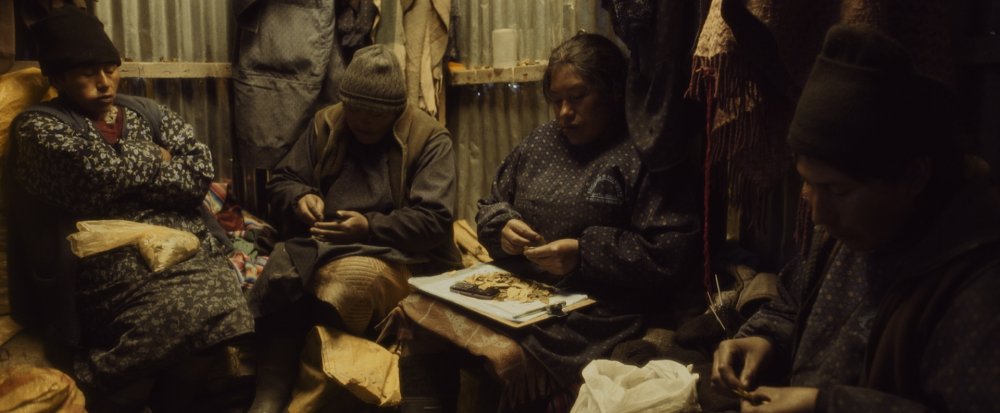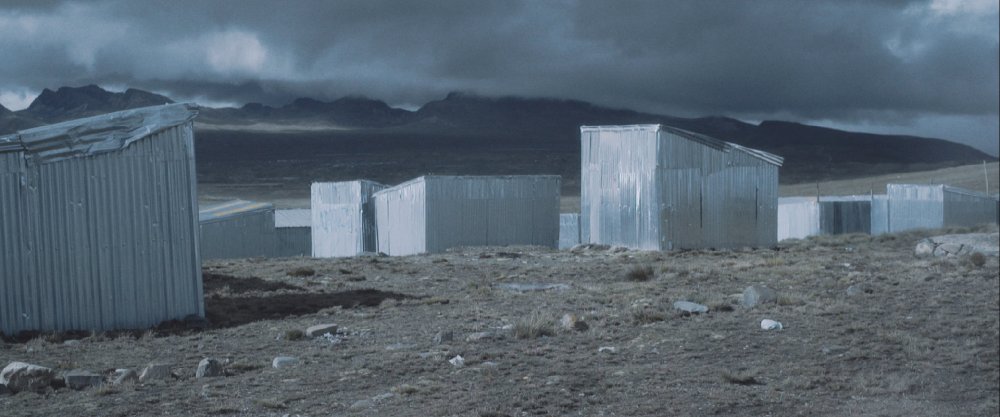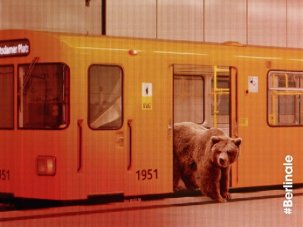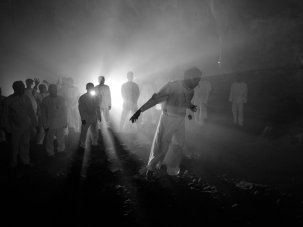A wide shot of a mountainside at night shows workers trudging up and down, winding their way along the narrow path, guided by torchlight. In voiceover, a woman tells a sad tale of the desperate hardship that led her, her husband and seven children to this unforgiving landscape. Portuguese director Salomé Lamas holds this shot and the accompanying testimony for the first hour of her latest documentary work, Eldorado XXI, which screened in the Berlinale’s experimental Forum section. Such a dark scene, with its barely-visible figures, and a soundtrack dominated by a continuous relating of stories (not least when subtitled) stories, demand quite some concentration.
Portugal / France 2016
125 min
Director Salomé Lamas
In Spanish, Quechua, Aymara
salomelamas.info/projects-iii/eldorado-xxi
► Clips
Eldorado XXI premieres in the UK on 26 April 2017 in Frames of Representation at the ICA, London.
Indeed, the effect of reading (but not really seeing) and the extended duration of the shot means the words spoken can be fully absorbed. The scene takes place in La Rinconada, Peru, the highest settlement in the world, where thousands live this harsh existence, trying to extract minerals from the black earth. The woman’s story testifies to a series of escalating responsibilities and pressure to provide, and of the complexity and injustice of Rinconada’s extraction industry. Another story details the faith placed in God to keep the workers safe, and the rituals and sacrifices which have cost some their lives for the sake of another’s. Blood is spilt on the mountainside, and still workers struggle on.
Lamas, currently a PhD candidate in film studies at the University of Coimbra, has over the past five years exhibited short films and installations widely at festivals and galleries, and won numerous awards. She works within the intersection of ethnography, documentary and fiction, and her commitment to research and investment in a locale is obvious from her approach to Eldorado XXI, her second feature following 2012’s No Man’s Land (Terra de ninguém).

After that first hour, she cuts to another wide shot, this time a snowy lake at daytime, as if to allow the eyes to adjust back to taking in more light. The rest of the film consists of still shots observing more of the lives of Rinconada’s inhabitants: women braving horizontal snowfall to scour rocks for an identifiable mineral, women sitting together to talk and chew cocoa, men stumbling drunkenly from a bar to a brothel. Further astonishing scenes take in the tiny variations of blue-grey on the hillside, with workers again barely visible, moving through its rocky terrain. The flattened character of the image, creating an almost haptic effect, conveys the brutality of the their endeavour, as if these people might just disappear unnoticed. Later the camera captures a masked ritual celebration at a fireside, and a formal Christian procession through the town, contextualising the deep roots the community has to the land and its collective faith in the revelatory moment that these continued efforts might bring.
Eldorado XXI’s two-part structure demonstrates Lamas’s interest in first hearing directly from those she documents. The extended narration of the film’s first hour contextualises the following sequences, ensuring that the voices of those that live in this habitat speak for themselves. This is essential to framing the apparent harshness of their experience on their own terms, and makes for a truly remarkable, atmospheric work whose astonishing words and images linger in the mind.
—
Correction (26 February 2016): this review originally ascribed the film’s location to Rinconada, Chile, rather than La Rinconada, Peru. We have now made amends.
-
The Digital Edition and Archive quick link
Log in here to your digital edition and archive subscription, take a look at the packages on offer and buy a subscription.







